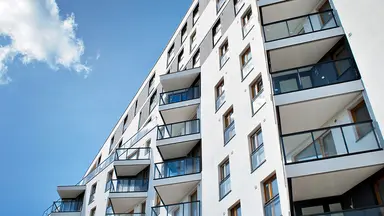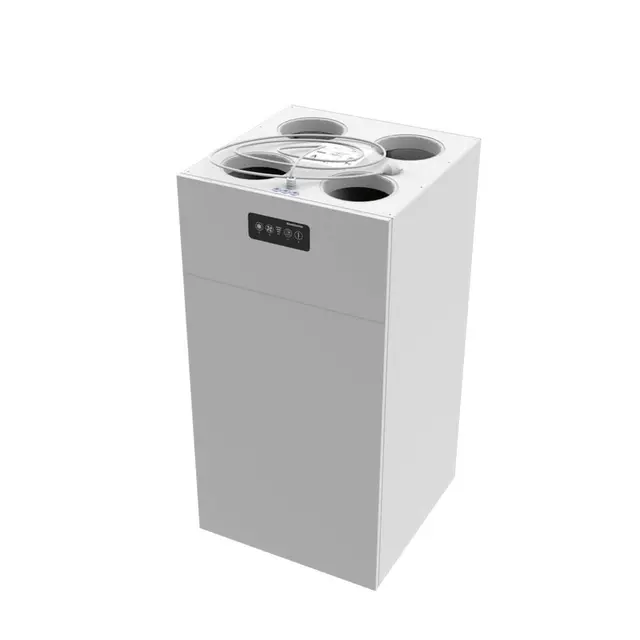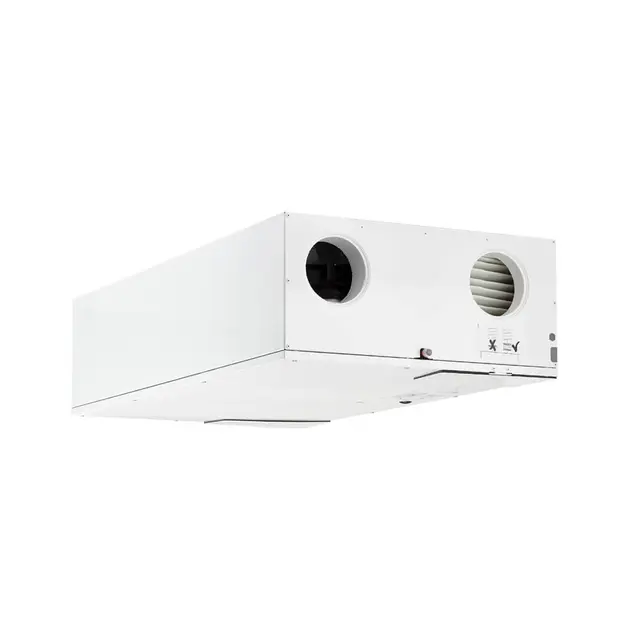Why the right residential ventilation system combats COVID-19

- Home
- Insights
- Ventilation insights
- Why the right residential ventilation system combats COVID-19
The COVID-19 pandemic has led to outcries over the safety of residential ventilation systems - do they spread disease or help fight against it? Here we will explain why the right solution limits the risks of airborne viruses and bacteria.
Since the outbreak of COVID-19, there has been significantly more conversation around the safety of residential ventilation systems, and a lot of speculation…
Is it possible for viruses to be transported via ventilation systems throughout a building?
Is it safer to keep windows or doors open in environments rather than use these systems?
Does residential ventilation increase the risk of catching infectious diseases?
These are questions that not only homeowners and building managers are asking, but have also raised concerns for property developers, installers, contractors and more who need to give them reassurance over utilising these systems.
Here, we will explain why using the right ventilation solution – one that uses fresh air with heat recovery – not only limits the spread of diseases like COVID-19, but actively reduces the risk.
COVID-19 and indoor transmission
The fears surrounding the potential spread of COVID-19 through ventilation systems is understandable due to the greater likelihood of infection transmission to take place indoors.
In a study of 318 outbreaks in China conducted by the World Health Organization highlighted that all but one of those outbreaks started in indoor spaces. With many national bodies encouraging people to remain in their homes to limit the spread of the virus, statistics such as this can be alarming.
Further global studies have also highlighted that poor ventilation in these settings have increased the transmission of other respiratory illnesses, including influenza, tuberculosis and rhinovirus.
Therefore, with the enhanced risk of contracting COVID-19 and other respiratory diseases indoors, it is natural for people to be concerned as to whether their ventilation system might accelerate the spread of viruses and bacteria. This is particularly true in places where the use of these systems is mandated by regulations relating to reduced energy consumption and decreased CO2 emissions.
However, research by Eurovent has confirmed that there is no tangible evidence that COVID-19 can be spread through ventilation or air-conditioning systems. It is highly improbable that droplets containing the virus, created when an infected person sneezes, coughs or talks, will be picked up and transferred around a building through these systems.
Nonetheless, the emergence of this virus has resulted in an important debate – the need for fresh air ventilation systems over systems that simply recirculate the present air.
Recirculating the air – an unsafe approach to ventilation?
Many ventilation systems – both past and present – work by constantly circulating the existing air within an indoor space. In traditional buildings, this approach was necessary to maximise heat recovery in these environments, minimising energy consumption.
However, the COVID-19 issue has raised concerns over this approach. By recirculating the same stale, dirty air and not introducing a flow of fresh air from the outdoors, it means that airborne particles, generated by coughing and sneezing, may remain in the atmosphere for hours afterwards, heightening the risk of spreading to others in the household.
Indeed, the Federation of European Heating, Ventilation and Air Conditioning Associations (REHVA) has already called for engineers to limit the use of air circulation in buildings with a known COVID-19 outbreak.
Fundamentally, the concerns surrounding how COVID-19 and similar diseases are spread has highlighted the importance of employing systems that replace the stale air within a space with fresh, clean air from the outdoors, something our team at Dantherm are pleased to see.
For more information on why air circulation is problematic, we recommend this RIBAJ article by Justin Bere.
How fresh air ventilation fights the spread of disease
A fresh air ventilation system works by actively extracting the existing air within a space while simultaneously introducing fresh air from the outdoors. This is done completely separately – old, stale air exits through one channel, while the fresh, clean air comes through another.
The major benefit of systems such as Dantherm’s highly efficient ventilation solutions that utilise this approach is that they ensure there is no cross-contamination of the air within the system. All of the pre-existing air is expelled to the outdoors, and is replaced by a continuous stream of fresh air.
This means that, using this approach, an indoor ventilation system is not contributing to the spread of respiratory diseases like COVID-19. Quite the contrary – it is actively fighting against the spread by maintaining a consistent flow of fresh air into the location.
What about heat recovery? This was once the key benefit of a system that recirculated the air, but is now completely achievable with a fresh air solution. For instance, in Dantherm’s units, while the air streams do not interact, the heat energy contained within the existing air is transferred over to the fresh air intake.
This exceptional heat recovery means that the temperature within the room or building remains consistent and comfortable, without the expense of having to constantly reheat the area with a distinct heating system.
Both our compact and flexible HCV 400 and HCC 2 ventilation units are highly regarded for the effectiveness of their heat recovery, standing at up to 96% efficiency. This places both towards the top of the Passive House Institute’s rankings for this key metric.
As well as heat, our Enthalpy Heat Exchanger recovers the thermal and latent energy within the space to keep humidity levels consistent. During the winter months, maintaining higher humidity levels can keep homes more comfortable, while in the summer the system can be configured to reduce the humidity levels.
This is also important in minimising the spread of illnesses such as COVID-19 – maintaining a relative humidity level of between 40% and 60% is believed to help limit the spread of these particles in the air, while keeping conditions comfortable for residents.
Is it better to simply open doors and windows?
While keeping windows and doors open to encourage a constant flow of fresh air into a building might seem like a potential solution, it counteracts the primary reason why residential ventilation systems are widely employed across Europe – energy efficiency.
By opening windows and doors, it means that heating, cooling and ventilation systems need to work harder and exert more energy to restore comfortable conditions when they are later closed. This is highly inefficient, leading to greater energy costs for home and property owners, and increasing the amount of CO2 these systems generate into the atmosphere.
It is for this reason that regulations surrounding indoor climate control are becoming stricter and more widespread around Europe - a trend that we are happy to see, both with regards to people saving on energy costs and in protecting our planet in the long term.
How Dantherm makes residential ventilation safe and efficient
Although the COVID-19 pandemic has been a time of challenge and struggle for many, it has served to raise awareness of the importance of healthy indoor climates, something that we at Dantherm Group hope continues long after this has been resolved.
In this instance, it has highlighted the importance of a ventilation solution that introduces fresh air with heat and humidity recovery over a system that simply recirculates the same air. In order to maintain the health and wellbeing of residents, as well as preserve the energy-saving benefits of these units, this approach must be prioritised moving forward.
Dantherm ventilation solutions are already built for this cleaner, healthier future. Our flexible, highly efficient units, such as the HCV 400 and HCC 2, create indoor spaces that protect the comfort, health and wellbeing of residents and the buildings themselves.
High-efficiency heat recovery
EC fan motors with low energy consumption
Summer cooling mode
Fireplace mode
Easy to install and calibrate
For more information about our ventilation solutions, please download our full guide on selecting and installing residential ventilation solutions, or get in touch by completing the form below.
Related products
Featured insights

Thermal efficiency, SFP, fire safety and heat exchanger are key to your choice

Get our comprehensive 28-page guide for installers and other professionals here

Choosing the right place is key to a successful ownership
Need help with choosing the right solution? Our team of over 100 climate control experts can assist.
You can also reach out or join the discussion on our Social Media. Check out our LinkedIn page.


